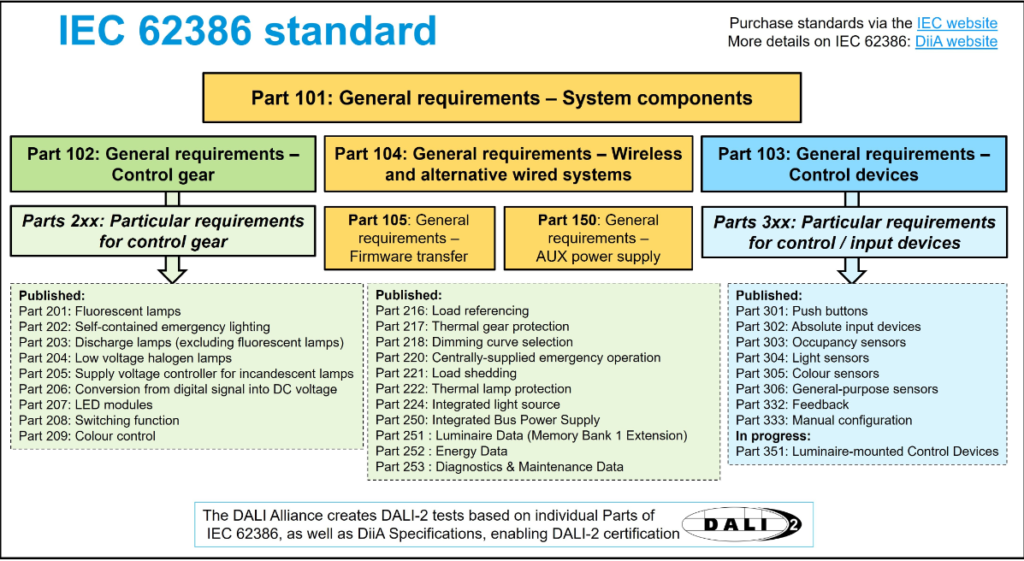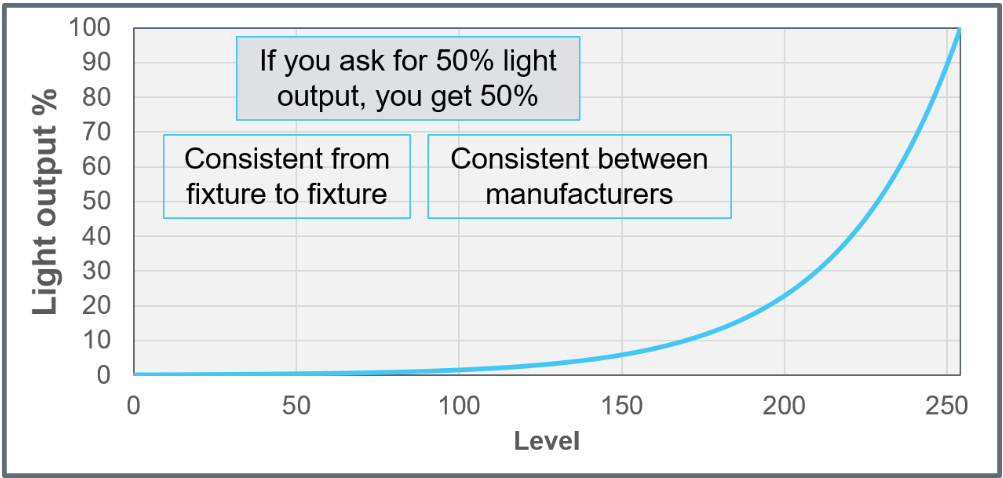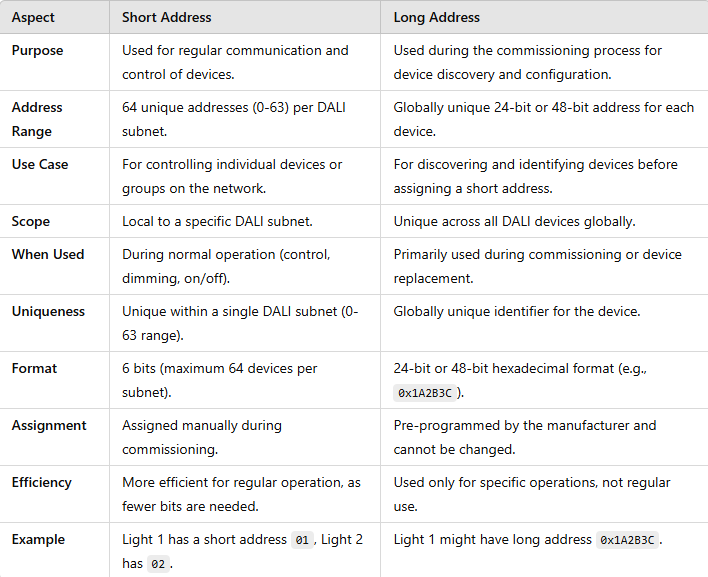
The international IEC 62386 standard
IEC 62386 is the international standard for the Digital Addressable Lighting Interface (DALI), published by the International Electrotechnical Commission (IEC). This standard is divided into multiple parts, which are available for purchase on the IEC website.
The table below outlines the status of various parts of IEC 62386. Parts marked as "in progress" are being developed by the IEC working group WG11 of TC34, which is responsible for writing and maintaining the standard. The DALI Alliance (DiiA) actively participates in the development of IEC 62386 through this working group.

standards - Digital Illumination Interface Alliance (dali-alliance.org)
DALI-2 and the DALI Alliance
DALI-2 is the latest version of the DALI protocol, certified by the DALI Alliance. All new parts of IEC 62386 are aligned with DALI-2, and some older parts are being updated for compatibility.
The DALI Alliance develops DALI-2 Test Procedures to help companies certify their products for compliance with various parts of the DALI-2 standard. These procedures are also based on specifications from the DiiA.
DiiA Specifications
The DALI Alliance (DiiA) develops new specifications that extend the functionality of the DALI protocol, building upon the existing IEC 62386 international standard. These specifications introduce additional features and functions to improve the flexibility and capability of DALI systems.
DiiA makes these specifications freely available to both members and non-members, offering easy access to the latest advancements in DALI technology.
DiiA also plans to transfer these specifications to the IEC, where they will be published as new parts of the IEC 62386 standard, further aligning global standards for DALI systems.
standards - Digital Illumination Interface Alliance (dali-alliance.org)


